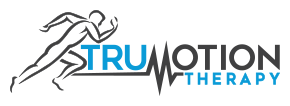January 11th, 2022
Massage guns have exploded in popularity over the last couple of years.¬† High end “designer” brands can go for as much as $600, and of course, there are the cheaper Amazon alternatives.¬†¬†
Massage guns are a form of therapy called percussion therapy, and there is actually merit to its usefulness for reducing perceived muscle soreness.  
As someone who treats musculoskeletal pain and injury I hear some crazy ways people are using their massage guns.  Many of you reading this have one, so I want to make sure you are using it correctly!
1. Avoid bones, tendons, and joints
This may seem obvious, but if you’re not well versed in anatomy you may not be entirely sure if that nodule is a muscle knot or a bone.¬† My best advice is to not massage too close to a joint like your knee, ankle, elbow or shoulder.¬† This is where bones are more superficial and tendons are more prevalent.¬†¬†
Stick to massaging the belly of a muscle, which is usually in between joints (i.e. the quadricep is mid-thigh between the hip and knee).
When in doubt, feel it out. I just made that up, but it’s good advice.¬† Use your hand to feel the area before massaging.¬† Make sure you don’t feel hard bone or a rope-like tendon.
2. Start superficial then go deeper
It’s best to begin with light, superficial massage.¬† Let the muscle warm-up a bit before pushing deeper.¬† You may find superficial massage is all it takes for the muscle to relax.¬†¬†
One common misconception is that the goal of using a massage gun is to ‚Äúbreak up scar tissue.‚Ä̬† Therapies like massage, percussion, and foam rolling loosen muscles by stimulating and relaxing the nervous system not by beating a muscle into submission.¬† In fact, if you go after a tight muscle too aggressively your nervous system will fight back and make them even tighter.¬†
3. gently stretch the muscle after massaging
It’s best to move and stretch a muscle after it has been massaged.¬† This helps increase blood-flow and neurological awareness to the area being worked, and will give you longer lasting results!
4. Don’t treat pain
As mentioned above, percussion therapy has been found to reduce perceived muscle soreness.  This soreness may be due to a tough workout or simply sitting at the desk for too long.  
Treating pain is more nuanced, and pounding a painful spot with a massage gun may make it worse.¬† See a medical professional if you’re experiencing pain.¬†¬†
If you’re experiencing pain or injury, we’re here to help.¬† Click HERE to schedule an appointment.





